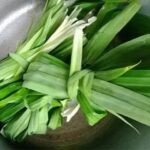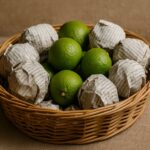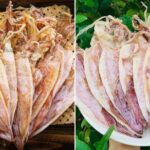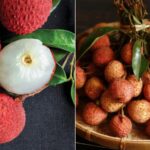Boiling shrimp may seem simple, but if not done right, the shrimp meat can turn out bland and fishy. The key to delicious boiled shrimp is retaining its natural sweetness, ensuring the meat is chewy yet tender, and avoiding any unpleasant fishiness. The choice of water temperature plays a crucial role in achieving this.
Should I Use Hot or Cold Water to Boil Shrimp Without the Fishy Taste?
Despite its simplicity, many people struggle to boil shrimp correctly. According to experienced chefs, getting the water temperature just right is essential to the quality of the dish.
When boiling shrimp, avoid adding them to cold water or waiting for the water to reach a rolling boil. Boiling shrimp in cold water takes longer, resulting in overcooked, dry, and mushy shrimp. Additionally, cold water can accentuate the fishy taste.
On the other hand, using water that is already at a rolling boil causes the shrimp to curl up quickly, making the meat shrink and compromising its flavor.
The ideal approach is to heat the water to approximately 85-90°C (185-194°F). Then, add the shrimp and stir gently. Maintain a medium heat to bring the water to a gentle boil. From the moment the water starts boiling, two minutes is all it takes to perfectly cook the shrimp. Larger shrimp may require slightly more time. To check if the shrimp are done, observe their color and shape. Once the shells turn completely red and the bodies curve slightly, they’re ready. Overcooking will result in dry shrimp, so be sure to turn off the heat immediately. Cover the pot and let the shrimp sit in the hot water for an additional minute before removing them. This trick ensures the shrimp are cooked while maintaining moist and tender meat.
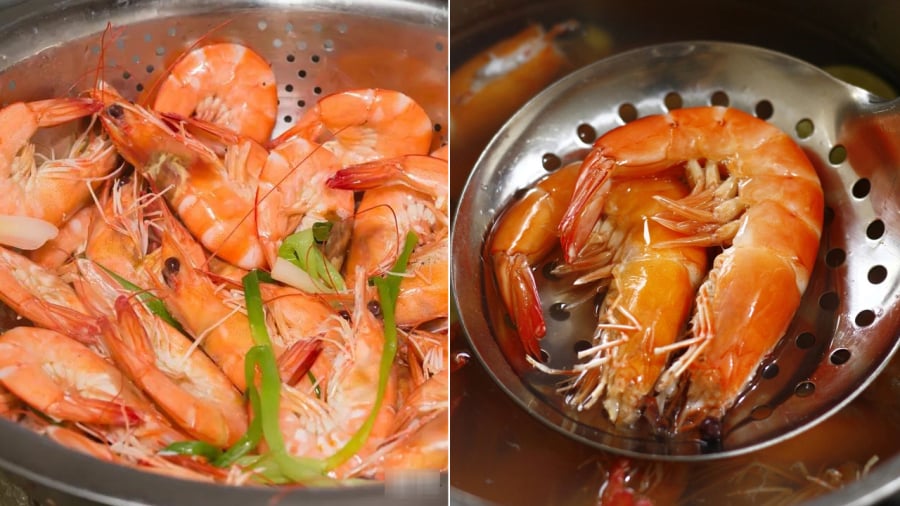
To enhance the flavor of the shrimp, add a touch of ginger, lemongrass, onion, and cooking wine to the boiling water. These ingredients are excellent at eliminating any fishy odor.
Before serving, be sure to drain the shrimp thoroughly. Placing them on a plate while they’re still dripping with cooking liquid will result in soggy, less appetizing shrimp.
If you plan to use the shrimp for salads, spring rolls, noodle soups, or other dishes, plunge them into a bowl of ice-cold water after boiling. This helps firm up the meat, making it easier to peel. Once the shrimp have cooled, remove them from the water and pat them dry. Then, carefully peel off the shells and arrange the meat on a plate or in a container, depending on your intended use.
Selecting the Freshest Shrimp
For boiled shrimp, freshness is key to achieving that natural sweetness and firm texture. The best shrimp are those that are still actively swimming or jumping when purchased. If buying frozen shrimp, pay attention to the shells. Fresh shrimp from the sea typically have shells that are greenish-white or light yellow. The shells should be shiny and slightly translucent. The head and body should be firmly attached, and neither should be black. Fresh shrimp should only have a mild seafood scent, devoid of any pungent fishiness.
To test the shrimp’s freshness, gently press on the body. It should feel firm, not soft and mushy. Soft shrimp are a sign of deterioration and should be avoided.
When choosing frozen shrimp, opt for those with a curved shape. This indicates that they were frozen while still fresh, and their bodies curled due to the cold temperature.
The Secret to Crispy Shrimp: Avoid This Liquid to Prevent Soggy Shrimp and Preserve Their Delicious Flavor
Shrimp stir-frying may seem simple, but one tiny mistake can ruin the dish’s signature crispness and aroma. There’s a common liquid ingredient that people often add during stir-frying, which results in soggy shrimp with shells that lose their desirable crunch. Steer clear of this blunder if you want to perfect the art of stir-fried shrimp and achieve that mouthwatering crunch with every bite.
Preserving Fresh Lychees: A Guide to Keeping Them Crisp and Unbruised All Year Round
The luscious lychee-like flavor of Vietnamese plums, also known as Thoai Thieu, is a delicacy that deserves to be savored. But these plums have a frustratingly short shelf life, leaving enthusiasts scrambling to prolong their enjoyment. Resist the urge to immediately refrigerate your freshly purchased Thoai Thieu plums. Instead, embrace a clever preservation method that will significantly extend their lifespan, enabling you to indulge in their delectable sweetness for a more extended period.


























